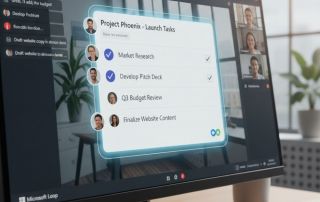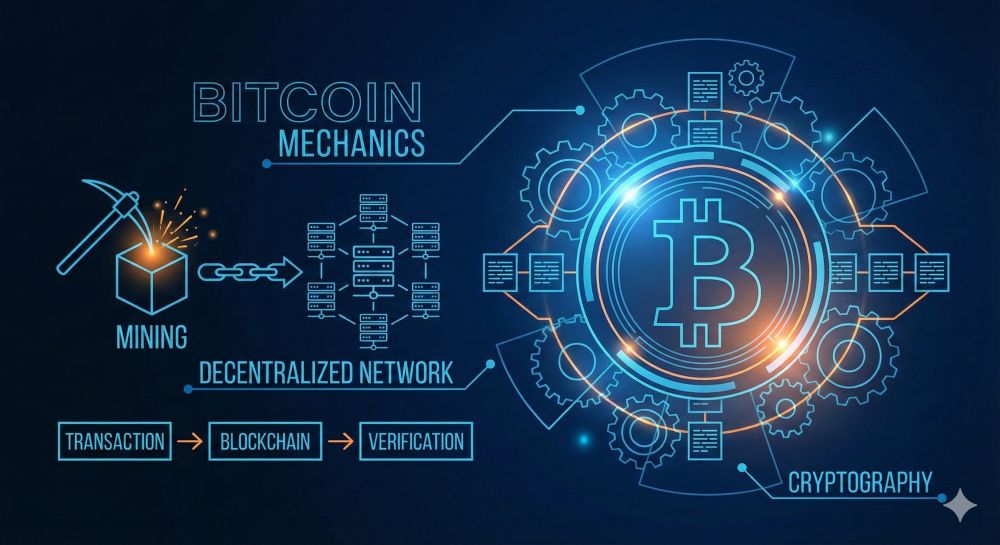Veo & Vids – Google’s dual leadership for the future of video
Date: November 27, 2025 Topic: Artificial Intelligence / Video Production
For a long time, OpenAI with “Sora” was considered the gold standard in the field of generative AI videos. However, during 2024 and 2025, Google caught up with a clear two-pillar strategy and redefined the field. This strategy rests on two disparate but closely related “siblings”: Veo, the creative powerhouse, and Google Vids, the organized manager for everyday workflows.
In this article, we examine the differences, synergies, and current technological status of these two AI video tools.

Google Veo: The Creative Visionary (The “Engine”)
Google Videos: The Efficient Manager (The “Tool”)
While Veo is the artist, Google Vids is the project manager. Vids isn’t just a text-to-video tool, but a fully-fledged productivity app within Google Workspace, operating alongside Docs, Sheets, and Slides.
The concept: “Video for Work”
Vids was developed because video has become the new “document” in the workplace. Instead of writing an email, executives send updates via video, HR departments create training videos, and sales teams deliver personalized pitches.
The Core Features (as of November 2025)
- AI-Powered Storyboarding: You provide Vids with a document (e.g., a PDF or a Google Doc), and the AI (Gemini) automatically generates a draft video script and storyboard.
- The Modular Approach: Vids doesn’t necessarily recreate every pixel. It accesses a vast library of stock videos, images, and music and combines them with the user’s own recordings (e.g., screen recordings).
- Voiceovers & Avatars: Vids offers high-quality AI voices for reading scripts aloud. Recent updates (Nov. 2025) have made these features available to a wider range of users (outside of expensive enterprise subscriptions).
- Collaboration: Just like in Google Docs, teams can work on, comment on, and edit the same video simultaneously.
The synergy: When Veo meets Vids
Google’s key move lies in the integration. Vids uses Veo.
Imagine you’re creating a presentation about renewable energy in Google Vids.
- Structure: Vids generates the script based on your notes.
- Material: For most scenes, Vids uses stock footage of wind turbines.
- The gap: For one specific scene, you’re missing the right image: “A futuristic solar power plant on Mars.”
The solution: This is where Veo comes in. Within the Vids interface, you use the “Generate Video” function to create this specific clip using Veo and seamlessly insert it into the timeline.
Comparison table
| feature | Google Veo | Google Vids |
|---|---|---|
| type | Generative AI model (backend/engine) | Workspace Applikation (Frontend/Tool) |
| Primary Output | Raw video clips (pixel generation) | Finished video presentations (editing & layout) |
| Target audience | Creatives, filmmakers, pro users | Office staff, HR, Sales, Management |
| comparable to | OpenAI Sora, Runway Gen-3, Kling | Canva, Microsoft Clipchamp, PowerPoint |
| Main strength | Visual quality & realism | Workflow efficiency & collaboration |
Conclusion and Outlook
The distinction between “Veo” and “Vids” is essential for understanding Google’s strategy. Google is not only trying to build the best video generator (Veo), but also to lower the barrier to using video in everyday work (Vids).
By November 2025, we see that this strategy is paying off: While pure generators often remain mere playgrounds, Vids, through its deep integration into the Google ecosystem (Drive, Gmail), has established itself as the standard for business communication, with Veo serving as the powerful engine beneath the hood.
Source References (Selection & Context)
The information in this article is based on Google’s developments and announcements between 2024 and the end of 2025:
- Google DeepMind / Veo Launch:
- Origin: Introduction at Google I/O 2024.
- Source: Google DeepMind Blog – Veo Announcement & Google Blog: Introducing Veo
- Google Vids Development & Features:
- Workspace Integration: Announced at Google Cloud Next ’24 and ongoing updates on the Workspace Blog.
- Source: Google Workspace Blog – Vids
- Current Updates (as of Nov 2025):
- Expanded Access: Reports on the expansion of AI capabilities in Vids for Gmail users and the integration of Veo 3.
- Source: Google Workspace Updates Feed & Tech reporting (e.g., The Verge or TechCrunch Archive on Veo 3 releases in 2025).
- Technical details on Veo 3:
- Source: Google Cloud Vertex AI document on Veo (This contains specifications for resolution and audio features).
- Image: Google Nano Banana Pro
Beliebte Beiträge
Die Homeoffice-Falle: Warum unsichtbare Arbeit deine Beförderung gefährdet
Produktiv im Homeoffice, doch befördert wird der Kollege im Büro? Willkommen in der Homeoffice-Falle. "Proximity Bias" lässt deine Leistung oft unsichtbar werden. Lerne 4 Strategien, wie du auch remote sichtbar bleibst und deine Karriere sicherst – ganz ohne Wichtigtuerei.
Microsoft Loop in Teams: The revolution of your notes?
What exactly are these Loop components in Microsoft Teams? We'll show you how these "living mini-documents" can accelerate your teamwork. From dynamic agendas to shared, real-time checklists – discover practical use cases for your everyday work.
Career booster 2026: These Microsoft Office skills will take you further!
A new year, new career opportunities! But which Office skills will really be in demand in 2026? "Skilled use" is no longer enough. We'll show you today's must-haves – like advanced Excel, using AI in the office, and relevant certifications for your resume.
Microsoft Power Platform: The low-code revolution for every business
The Power Platform democratizes IT! Business departments can analyze data (Power BI), build apps (Power Apps), automate processes (Power Automate), and create chatbots (Copilot Studio) without any programming knowledge. A deep dive into the low-code future of your company.
The business of your inbox: Who buys and sells email addresses, and what they cost.
Your email address is a valuable commodity. Hackers sell it on the dark web, and marketers pay for verified contacts. This article examines the mechanisms of this trade, specifies concrete prices per record, and provides tips on how to prevent your data from becoming a commodity.
AI in Hollywood: The silent revolution of the dream factory
AI in Hollywood is more than just de-aging and VFX. It analyzes scripts, optimizes marketing, and was central to the WGA and SAG AFTRA strikes. Learn how AI is revolutionizing the dream factory – balancing efficiency, new creativity, and concerns about jobs.

































